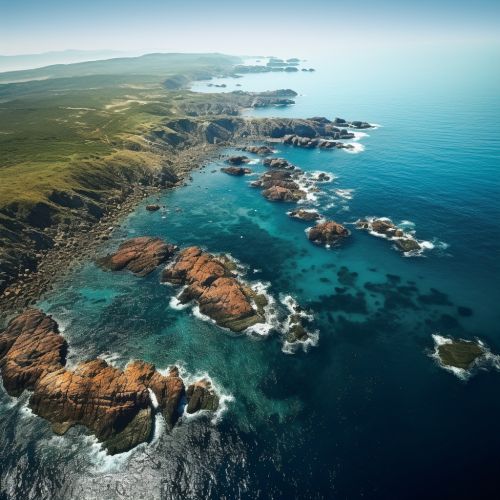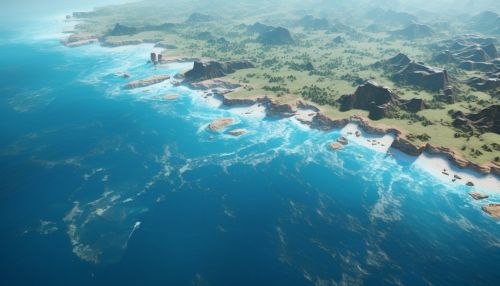Oceanic Plate
Introduction
The oceanic plate is a large, rigid piece of the Earth's lithosphere that is continually being created at mid-ocean ridges and destroyed at deep-sea trenches. This process is a fundamental part of plate tectonics, the theory that explains how the Earth's crust is divided into a number of large and small plates that move relative to each other.


Formation of Oceanic Plates
Oceanic plates are formed through a process known as seafloor spreading. At mid-ocean ridges, magma from the Earth's mantle rises to the surface, cools, and solidifies to form new oceanic crust. This process is driven by the heat generated from radioactive decay within the Earth's core and mantle.
Composition and Structure
Oceanic plates are primarily composed of basalt, a type of igneous rock that forms from rapidly cooling lava. This differs from the continental plates, which are primarily composed of granite, a lighter and less dense type of igneous rock. The difference in density between these two types of crust plays a significant role in the movement and interaction of tectonic plates.
Movement of Oceanic Plates
Oceanic plates are constantly moving due to the convective currents in the underlying asthenosphere. The direction and speed of plate movement can vary, but it generally ranges from 1 to 10 cm per year. The movement of oceanic plates can lead to various geological phenomena, including earthquakes, volcanic activity, and the creation of mountain ranges.
Interaction with Continental Plates
When an oceanic plate collides with a continental plate, the denser oceanic plate is forced underneath the continental plate in a process known as subduction. This leads to the formation of deep-sea trenches and can trigger intense seismic and volcanic activity.
Life Cycle of an Oceanic Plate
The life cycle of an oceanic plate begins at a mid-ocean ridge, where it is created through seafloor spreading. The plate then moves away from the ridge and cools, becoming denser and thicker as it ages. Eventually, the plate reaches a deep-sea trench, where it is subducted beneath another plate and recycled back into the mantle. This process can take hundreds of millions of years.
Importance in Earth's Climate
Oceanic plates play a crucial role in regulating the Earth's climate. Through the process of weathering, they help to remove carbon dioxide from the atmosphere, acting as a natural carbon sink. Additionally, the movement of oceanic plates helps to distribute heat around the planet, influencing global climate patterns.
